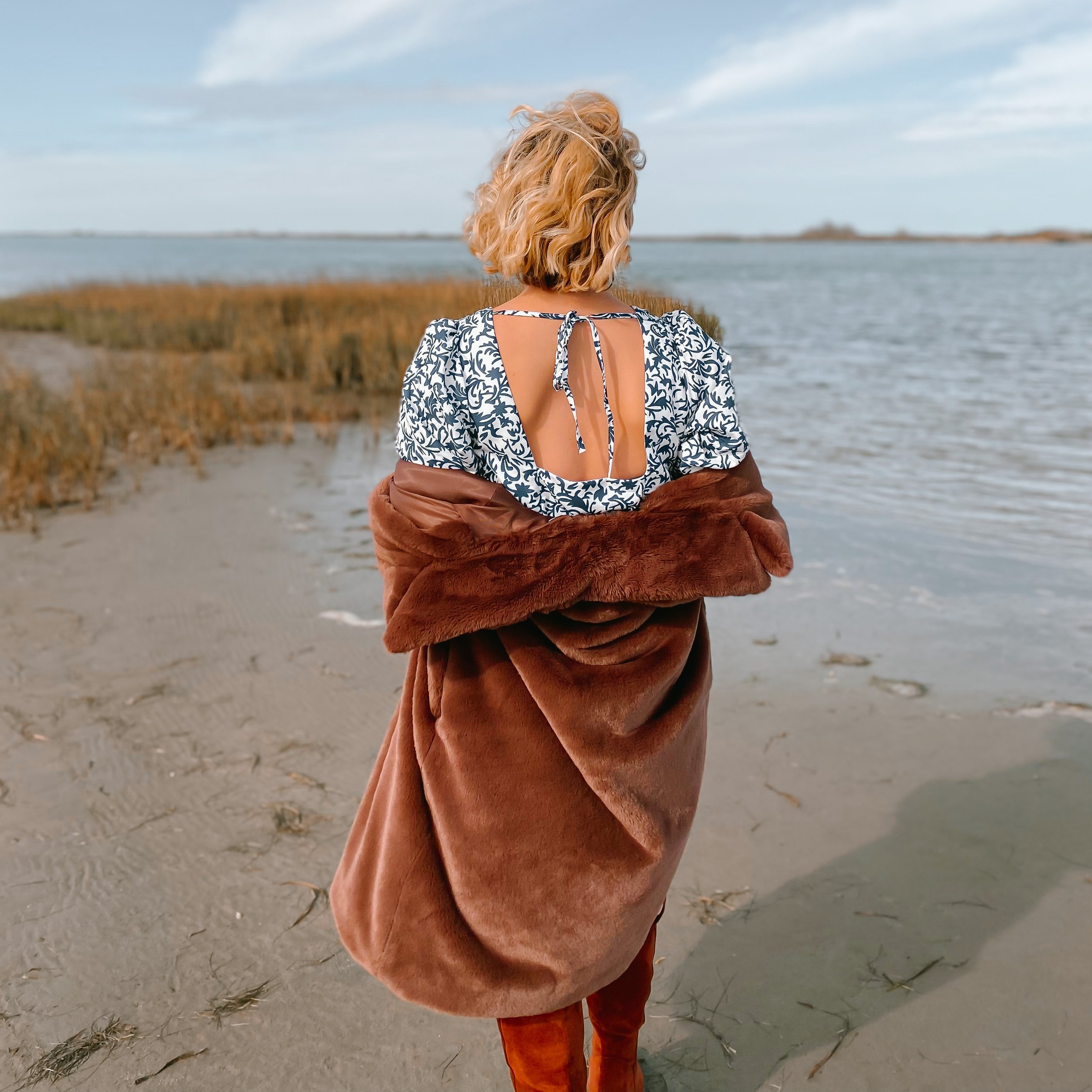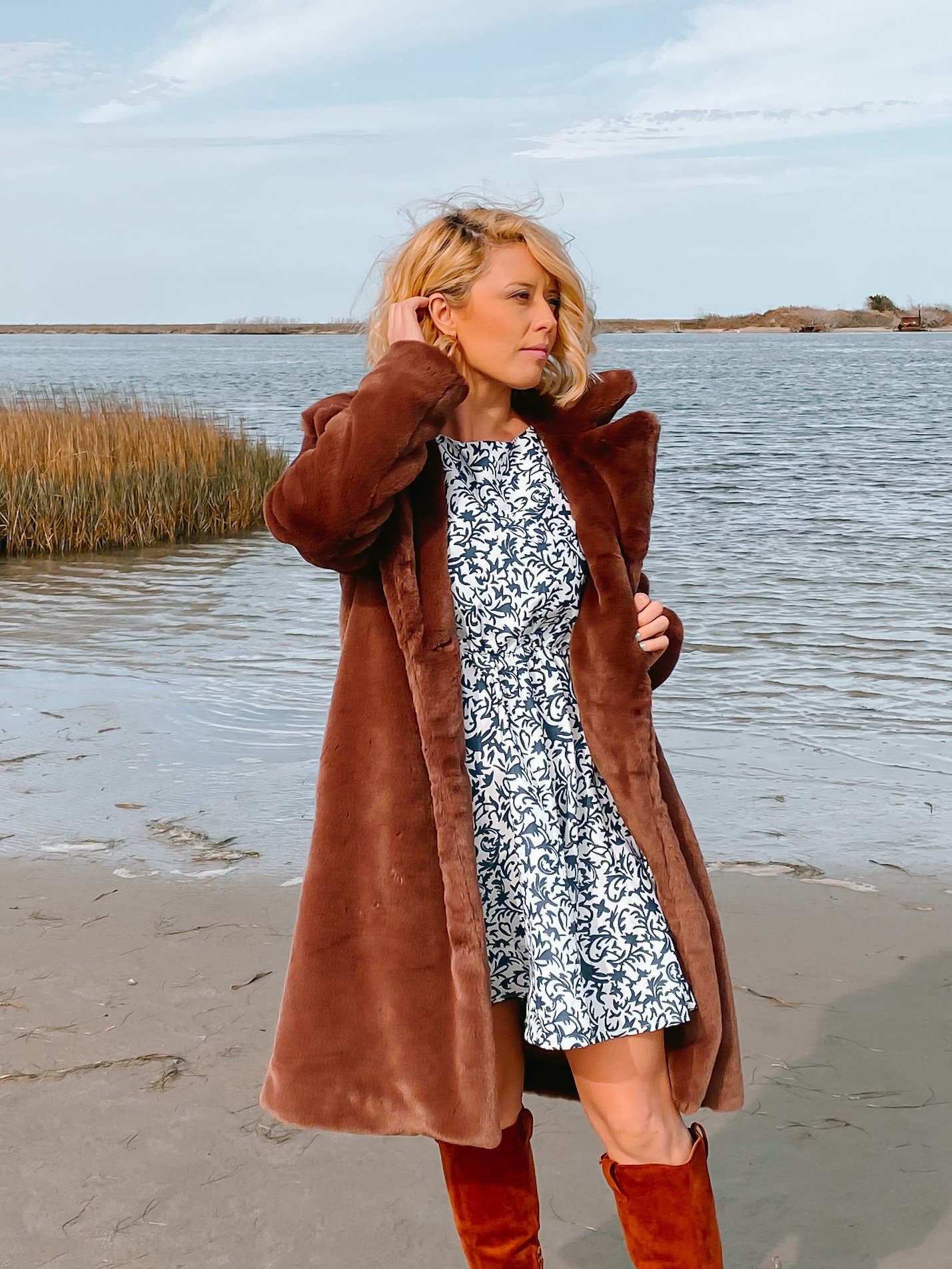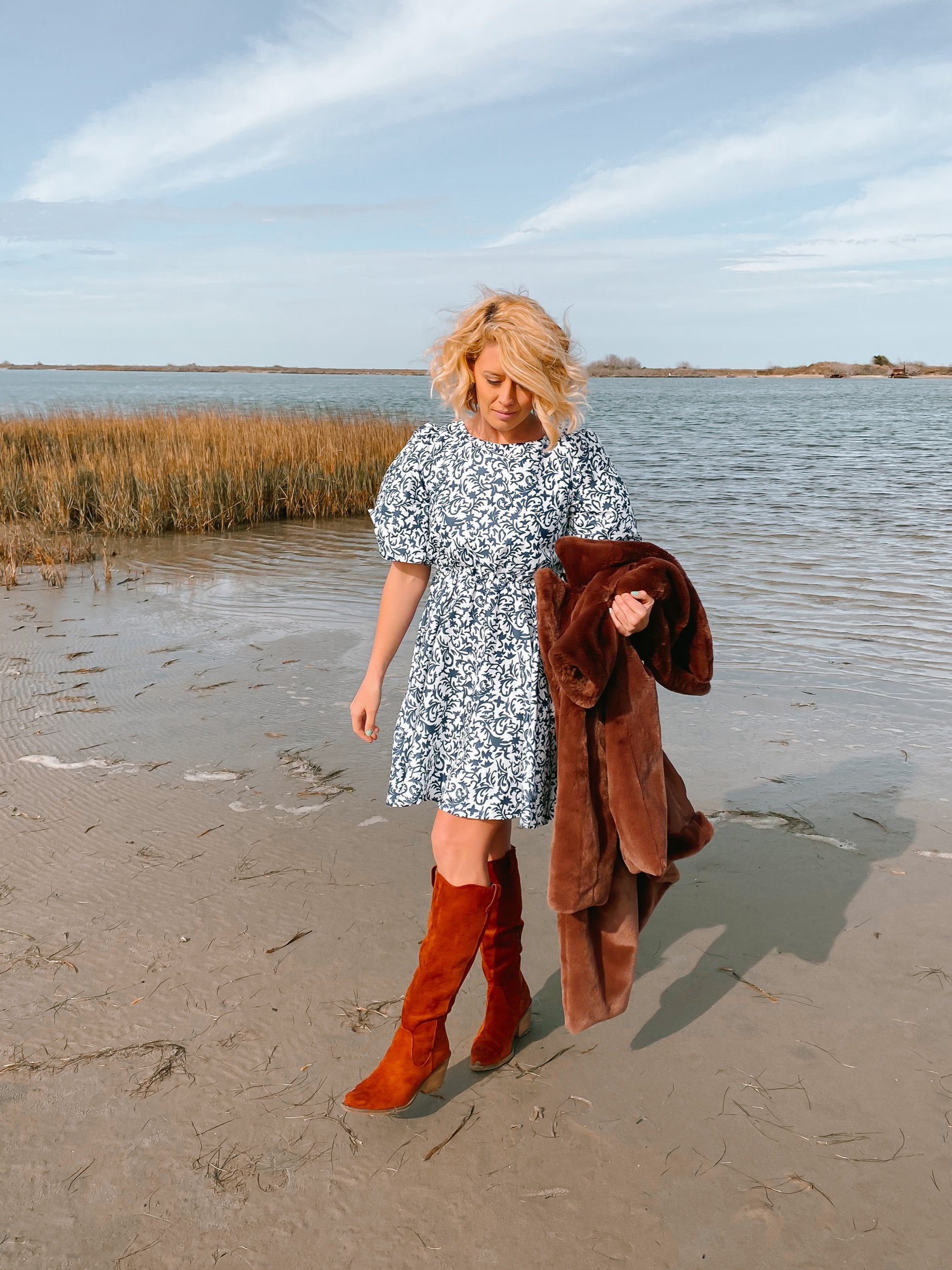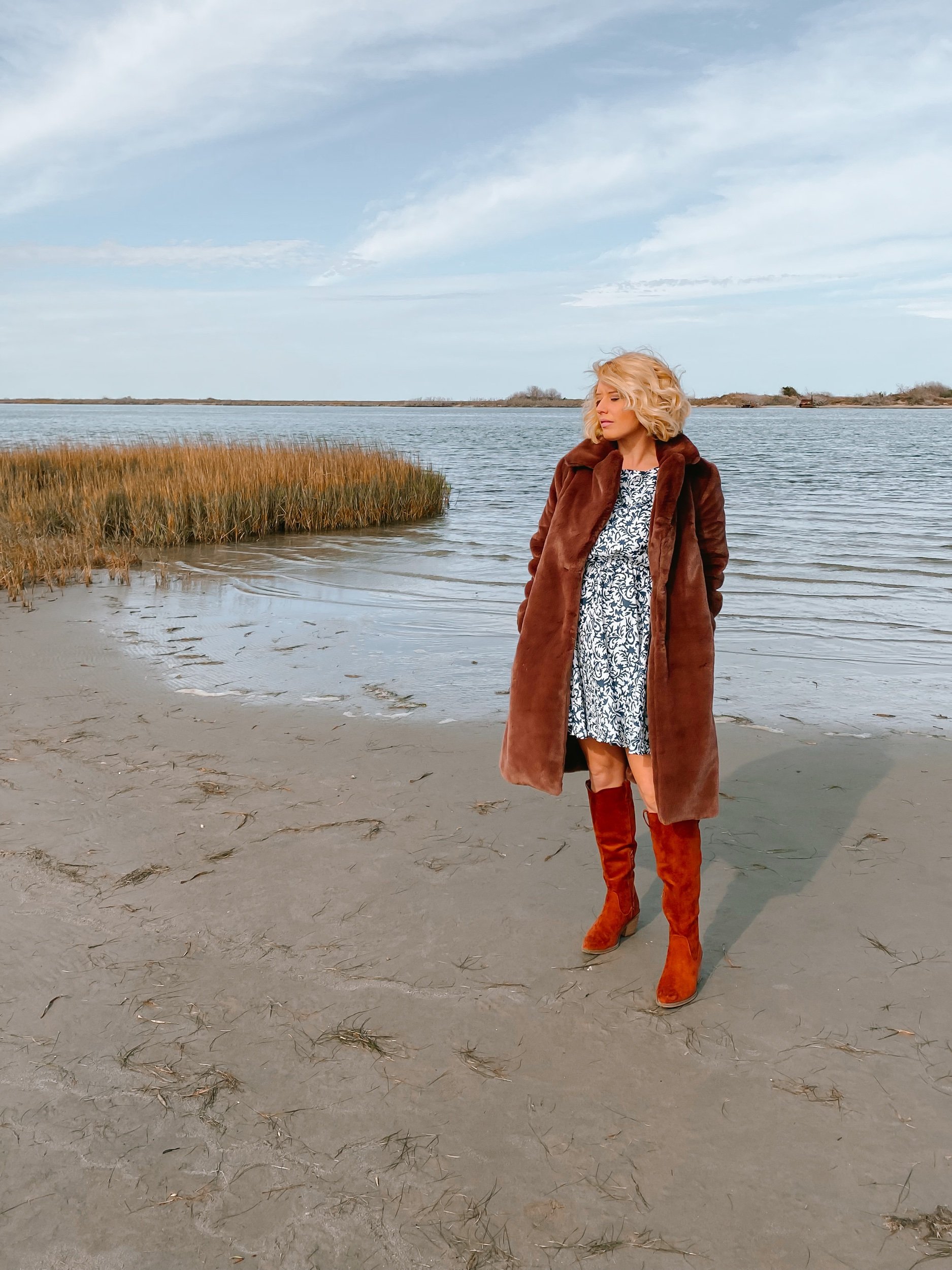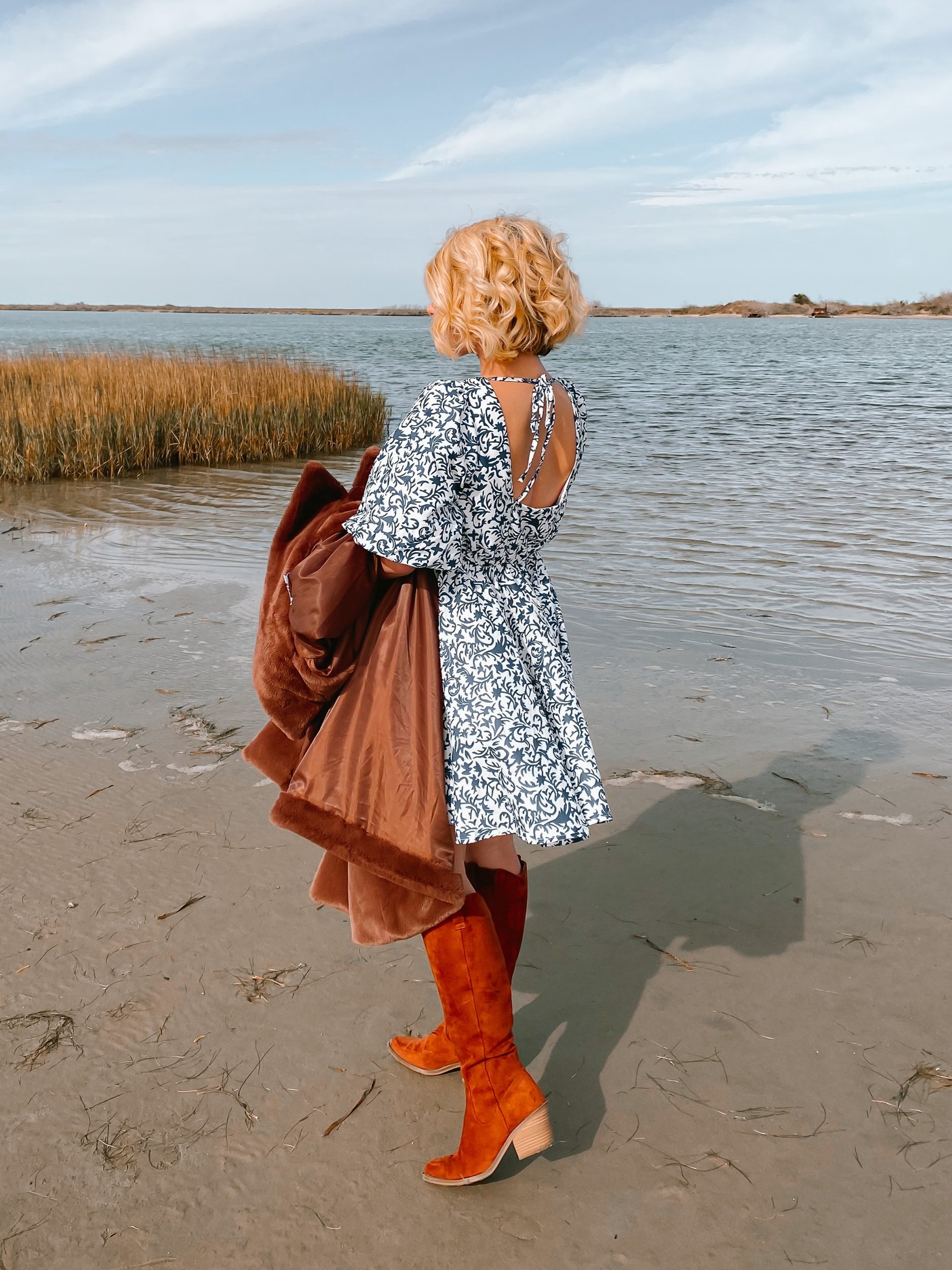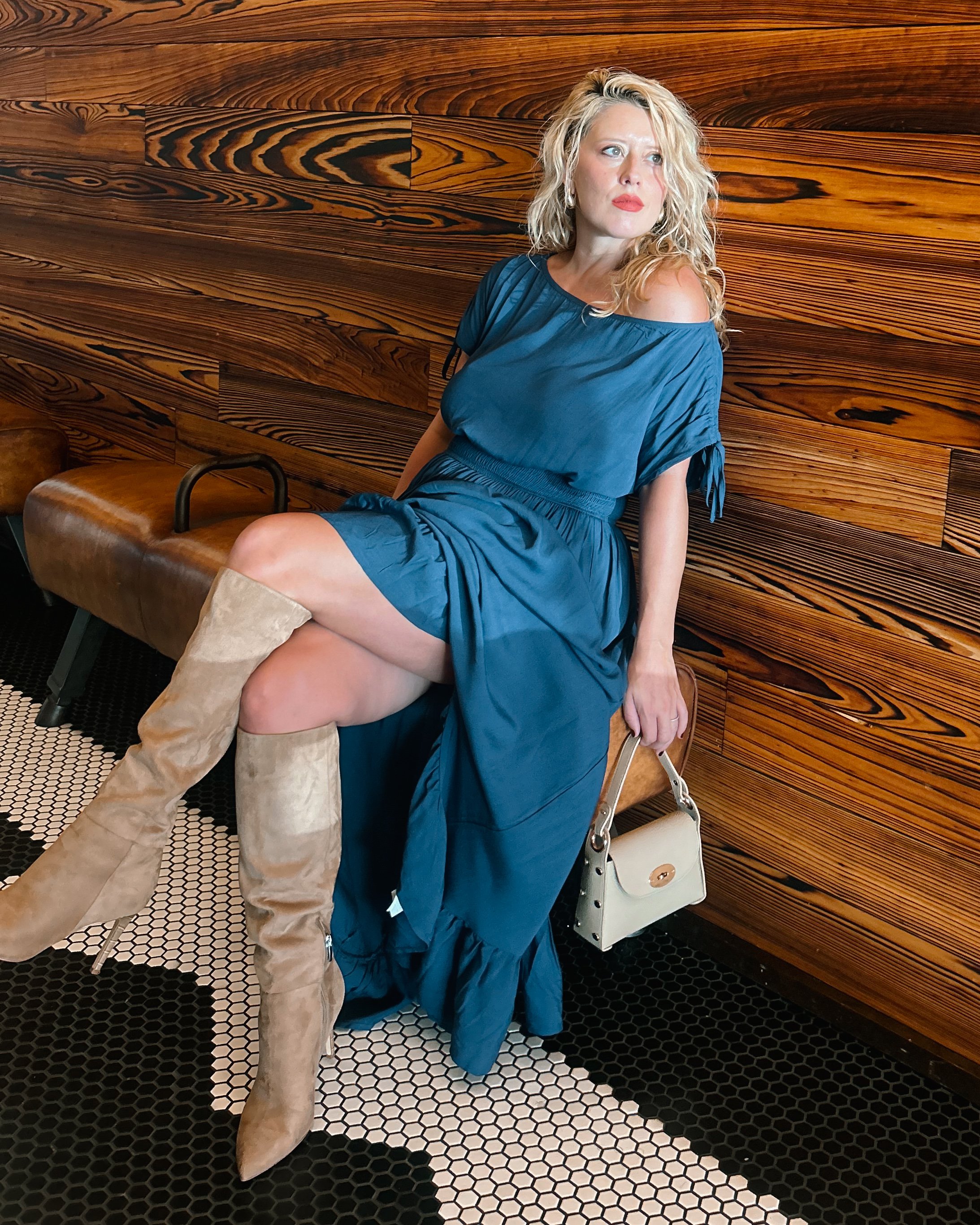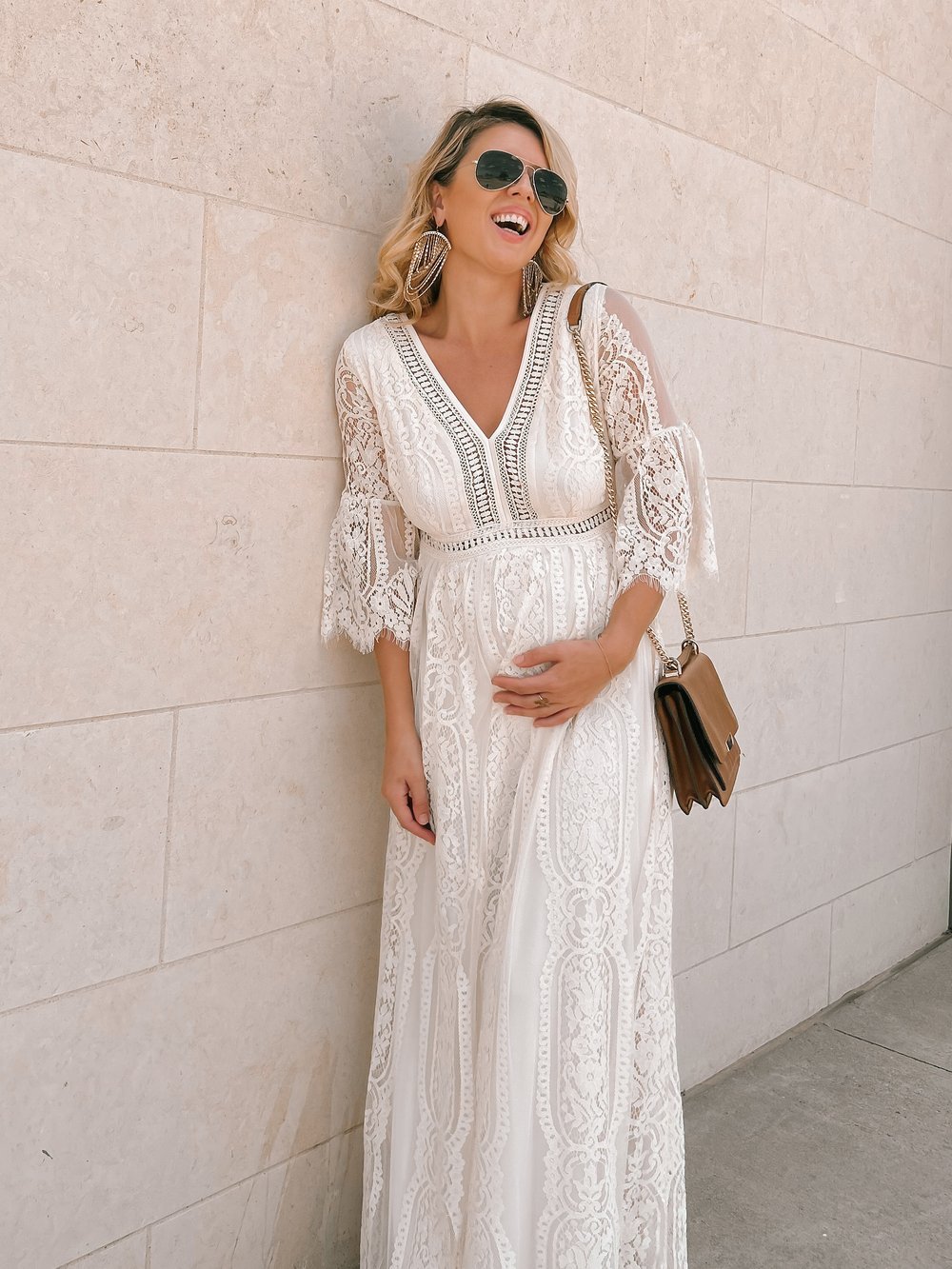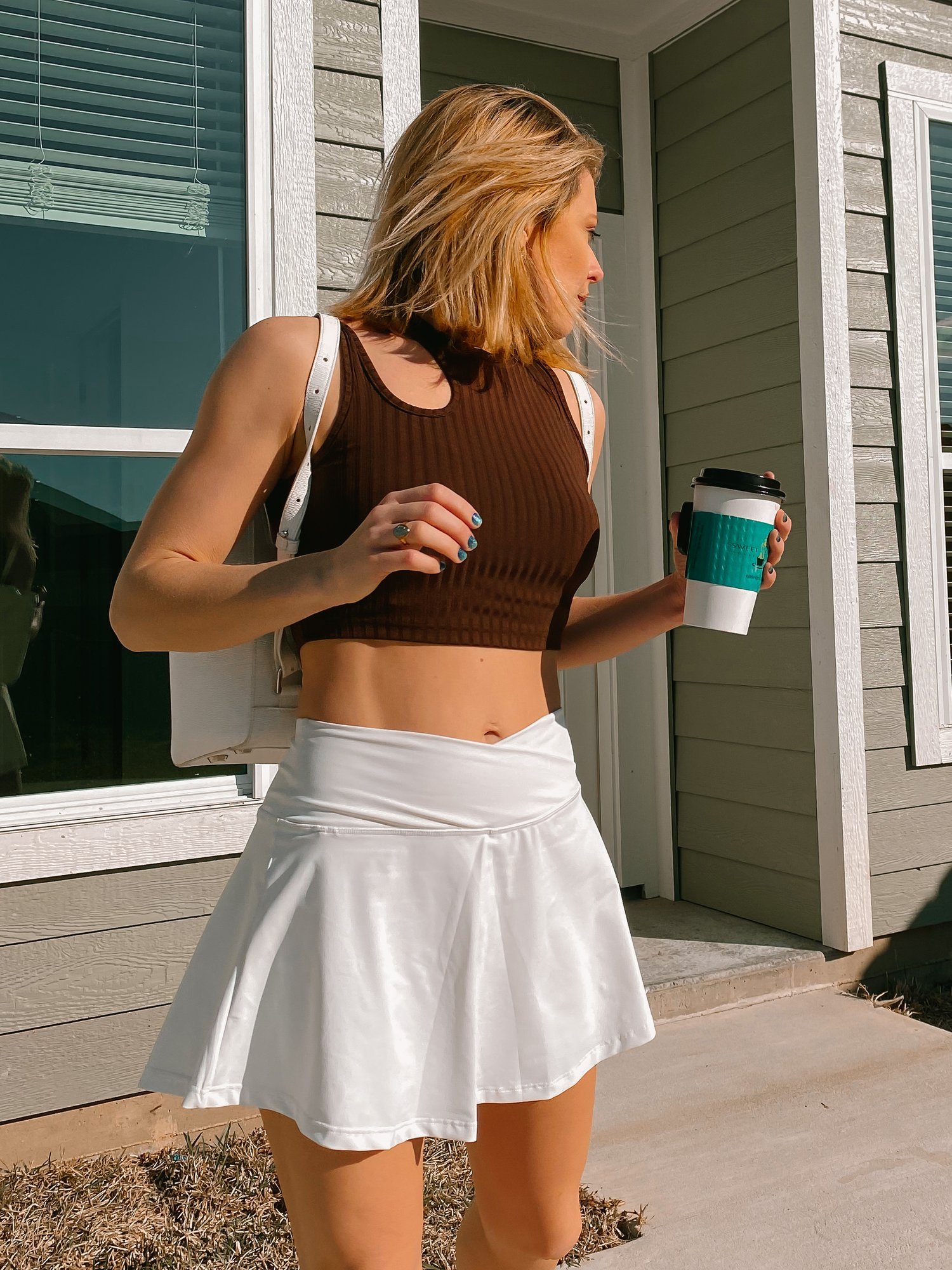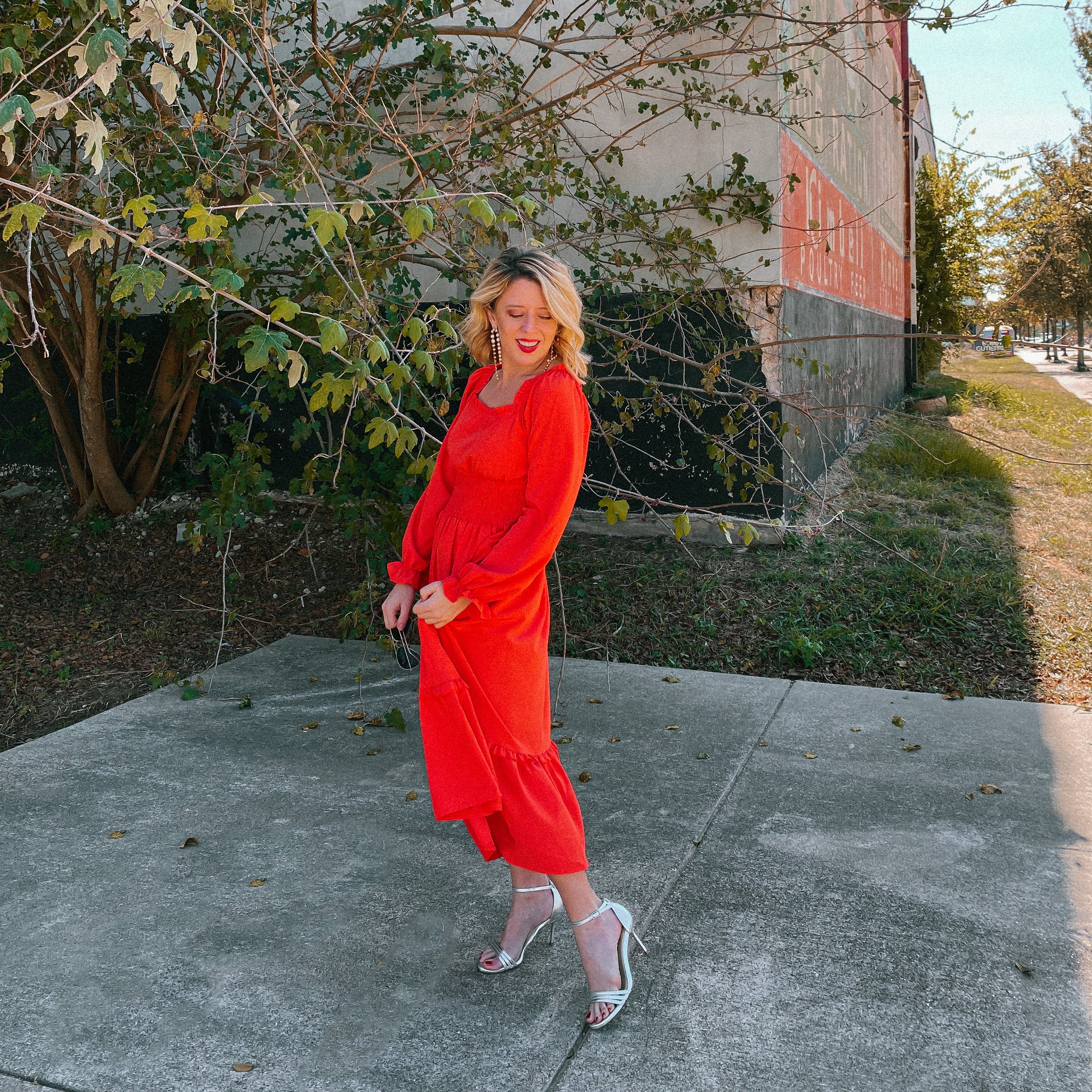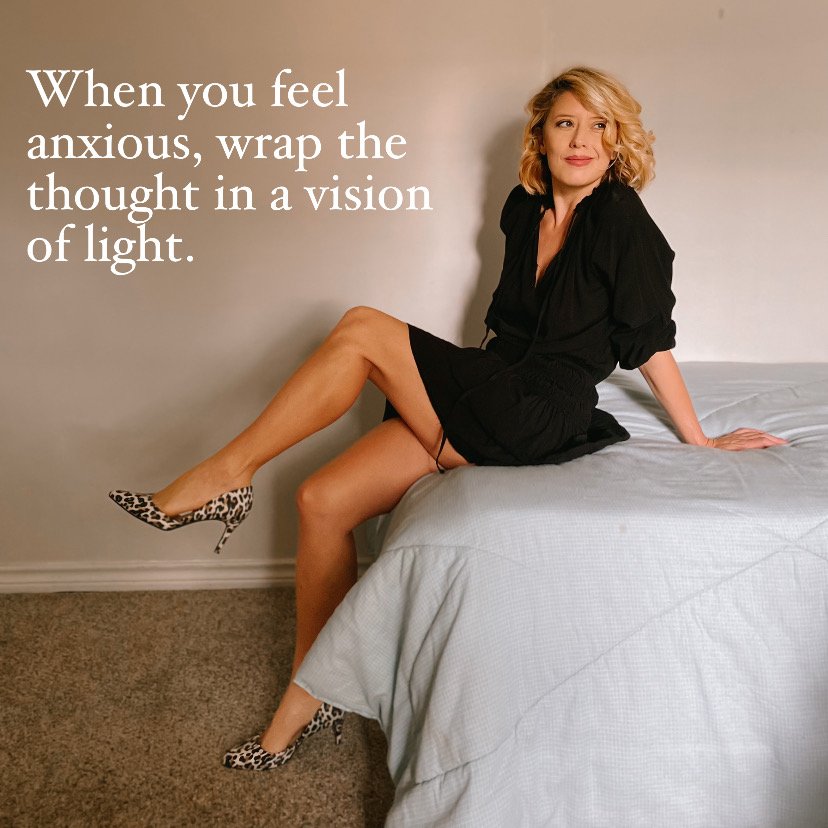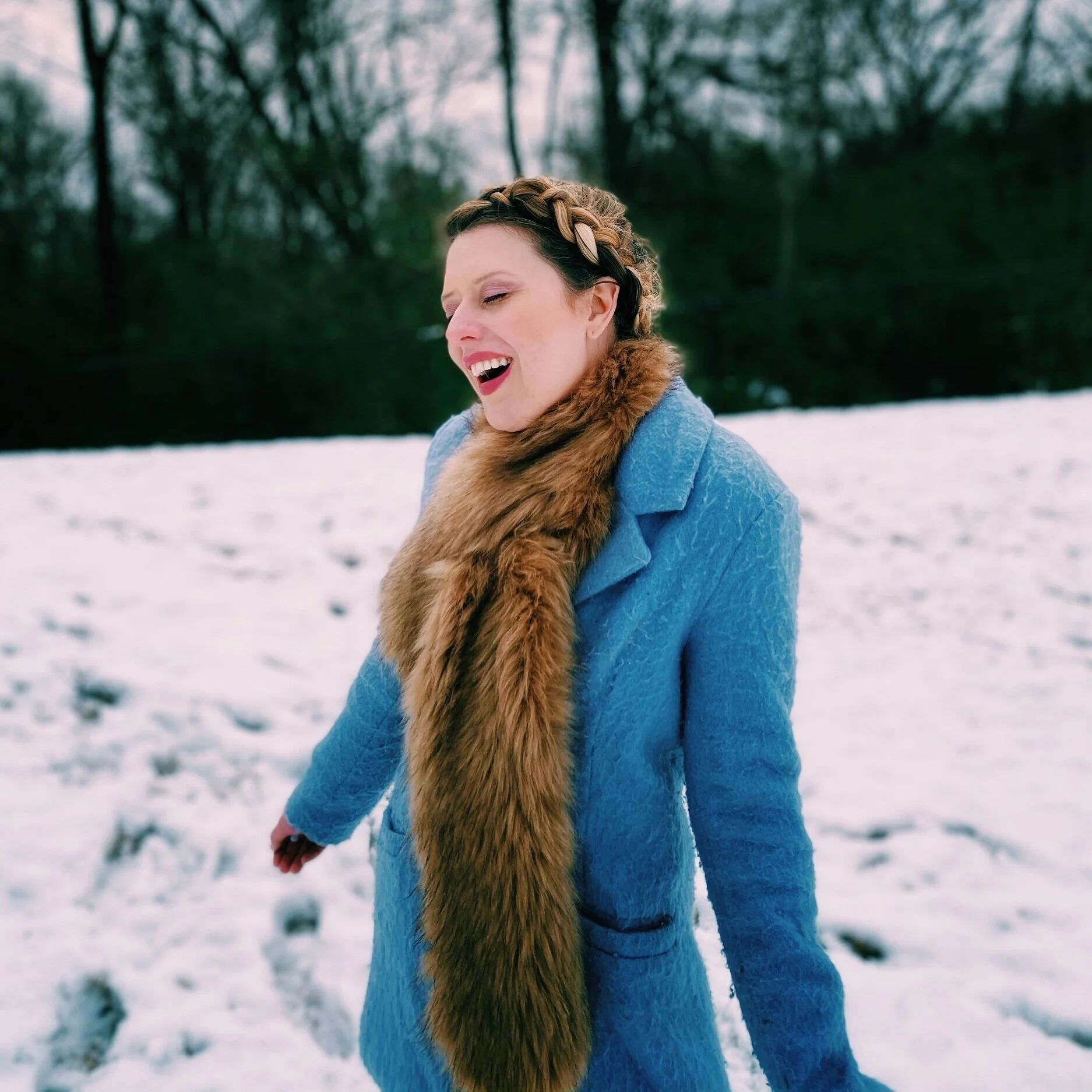Anxiety Relief and Utilizing a Coping Checklist
Coat: Amazon the Drop // Boots: Target // Dress: Amazon
Location: Harbor Island at Port Aransas, TX
Mental health. I’m so glad this topic has been on the rise especially since the pandemic hit. Now more than ever more and more people need resources. My anxiety journey began about 10 years ago. Through a series of trials, errors, and lots of therapy I am now able to manage panic attacks and anxiety without medication. This post is in no way meant to replace medical advice. If you are struggling I absolutely recommend seeking professional help. Today I’d like to share a resource I use in my own mental health toolkit called a “Coping Checklist.” I’m going to share with you guys a few benefits of having one and the science behind it, how to create one, and when to use it. The biggest key in your coping checklist is to use it as soon as you feel anxiety come on. The more you go through the sequence the easier the panic becomes to manage.
Know that it will take time
You didn’t get this way overnight. At least, I didn’t. I started experiencing panic and anxiety after trauma and years of intense life stress. I was in a very unhealthy marriage, taking care of a toddler, dealing with financial issues, and working insane hours. Needless to say, I rarely rested. Over time what happened in my brain is that it started producing higher and higher levels of cortisol and adrenaline. My fight-or-flight reaction was in full gear all the time. My therapist recommends that I get a ton of exercise, rest, a healthy diet, and sleep. The more I gave my body what it needed to repair, the less reactive my adrenaline system would be. I started a morning and evening routine to get those things in order.
Benefits of a Coping Checklist
Next up was the coping checklist. I still had frequent panic attacks and the checklist became my refuge. When panic set in I quickly opened up the notes on my phone and went through a list of 10 brief activities. As I repeated those activities, it gave my mind something to do and would let my adrenaline system calm down instead of spiraling. Most panic attacks last about 15-20 minutes. I knew if I just made it through without making things worse, the panic would lower. It worked. The more often I did the checklist, the more effective it was. Each time I completed it, my brain was forming new neurological connections to combat panic. When combined with the healthy lifestyle changes, over time my panic diminished.
What Should You Put on Your Coping Checklist
Your coping checklist is simply a list of activities you begin doing to help you work through the reaction to PTSD, anxiety trigger, trauma and other mental health conditions. It can even help people handle highly emotional situations in the workplace or home. The key is to choose activities that will let your body begin to calm down. I begin by starting a 20 minute timer on my phone or watch. Remember the panic attack will usually subside by then so it helps me to know how long I have left to focus on my coping checklist. Here’s what my list entails:
Start 20-minute timer
Breathe deeply and count on your fingers 10 breaths
Do a quick check - Am I hungry? Am I sleepy? Am I dehydrated? Did something trigger me?
If I have food and water I snack and drink it
10-minute walk while listing to my chill playlist on Spotify
Pin 5 new things on Pinterest on my phone
100 jumping jacks to get the energy out or dance to your favorite song
Clean my car, home, or space I’m in to gain control
Watch something funny on Instagram or TikTok (I keep a few accounts bookmarked)
Phone a friend if I am still in need to just talk it out
Everything on this list is activities I deem safe. They bring me joy or help my body produce serotonin and endorphins. I rarely just sit still. Usually, I focus on getting the energy out. If available, a run helps! When the checklist is completed, the panic usually subsided and I can just make it easier the rest of the day. The key is to not put me in a panic state again any time soon. I give myself extra grace during times that require the coping checklist. It’s better to do a little less and recover than push yourself in this scenario.
Long-term Results and Progress
Over time I have needed my coping checklist less and less. I rarely get to a panic level anymore if at all. I live an intentionally healthy life and it’s helped my body, mind, and emotions level out. I still have high stress and high anxiety days but now I give myself extra rest, exercise, and nourishment to help ease the intensity. I am able to manage my life without making panic calls anymore. It was not an overnight success. It took time to get to where I am today, but the good news is that you can too! There was a point where I couldn’t remember a day going by that I didn’t have a panic attack and I can’t tell you the last time I did now! A total 180-degree change. Take baby steps to get better. If you need time alone, don’t feel bad about it. Instead, be grateful for the fact that you are self-aware of your needs!
If you have been struggling with mental health issues you are not alone. Please seek help from a therapist if you are overwhelmed. You are special, loved, and have a purpose to live out. Don’t give up yet!
Love everything about this adorable blue and white floral dress. It is on the short side, so size up if you are taller!
